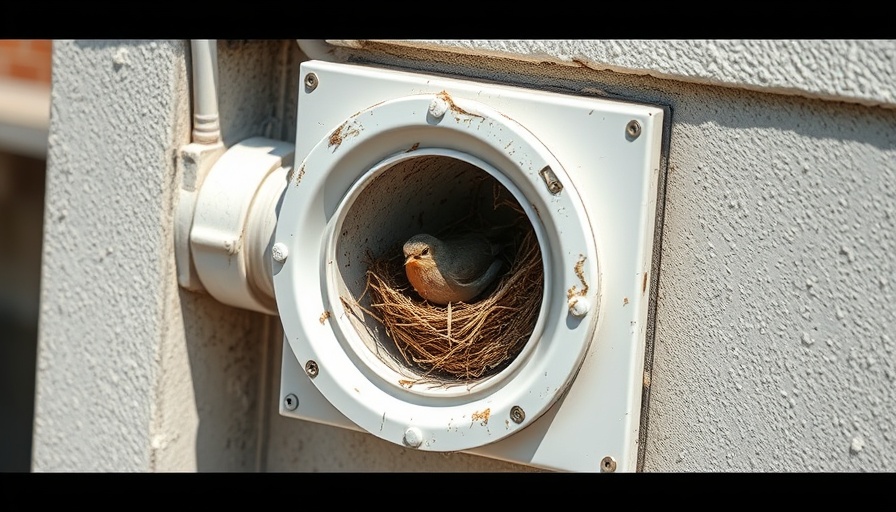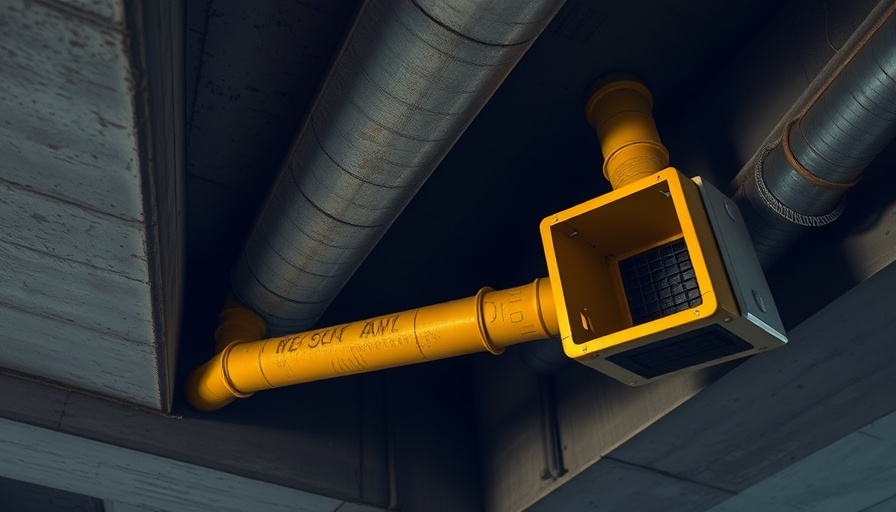
Why Bird Nests in Dryer Vents Are a Bigger Issue Than You Think
When we think of the cozy corners of our homes, the laundry room isn't typically at the top of the list. Yet, this often-overlooked space can become unintended wildlife habitat without us even realizing it. The phenomenon of birds nesting in dryer vents is not just a quirky fact — it can lead to serious home maintenance issues!
The Risks: Fire Hazard and Health Issues
Bird nests can obstruct airflow in the dryer vent, which not only hampers the dryer’s efficiency but also poses a significant fire risk. According to the National Fire Protection Association, failure to clean dryer vents is a leading cause of home fires. Nests made from twigs, grass, and other debris can create a perfect storm, leading to buildup that could potentially ignite.
Moreover, these nests can attract unwanted pests. When birds are nesting, they often bring the scent of food and debris, enticing rodents and insects closer to your home. It’s not a welcoming thought, especially when this becomes a gateway for more significant issues!
It's More Common Than You Think
In recent studies, reports indicate that an increasing number of homeowners are discovering nests in their dryer vents. Experts suggest that as urban sprawl encroaches on natural habitats, birds are seeking alternative nesting sites — your well-ventilated homes being quite enticing.
During the spring and summer months, it's particularly common. Birds are busy establishing their homes, and unfortunately, your dryer vent could easily look appealing. Knowing what to look for is essential!
How to Tell If You Have a Nest in Your Dryer Vent
Wondering if you’ve got a feathery family taking residence? Look for these clues:
- Unusual Noises: Chirping or scratching sounds coming from the vent.
- Decreased Dryer Performance: Clothes taking longer to dry, or damp clothes post-cycle.
- Visible Signs: Twigs or bird droppings near the vent exit.
How to Safely Remove a Bird Nest
Removing a bird's nest is a sensitive task, especially during nesting season when some birds are protected by law. Here's how to handle the situation safely:
1. **Inspect the Nest:** Confirm that it is no longer being used. If you see eggs or chicks, wait until they have fledged.
2. **Use Care:** Wear gloves and a mask when removing the nest to protect yourself from any allergens. 3. **Clean the Vent:** After removal, clean your vent thoroughly to prevent future nesting. This step is critical since birds are likely to return if the setup is favorable. 4. **Install a Vent Cover:** A vent cover with a mesh can significantly reduce the chance of future nesting while allowing air to flow freely.Preventing Bird Nests: Eco-Friendly Solutions
Considering a preventative approach? You’re on the right track! Use eco-friendly practices that ensure your home stays safe without harming wildlife.
- **Regular Dryer Vent Cleaning:** Make it a point to have your dryer vent cleaned frequently, especially if you discover any debris from previous nests. This can include hiring a professional service or using a lint brush designed for dryer vents.
- **Bird Deterrents:** Some homeowners have found success with nature-friendly deterrents. Hanging shiny objects around your vent or using bird-repelling sprays can make your vent less appealing to nesting birds.
Conclusion: Keep Your Home Safe and Cozy
Your home should be a sanctuary for you and your family, not a nesting ground for birds! By staying proactive and informed, you can protect your space from potential hazards while preserving our feathered friends. As you navigate your home maintenance, remember: a little awareness goes a long way!
 Add Row
Add Row  Add
Add 



Write A Comment